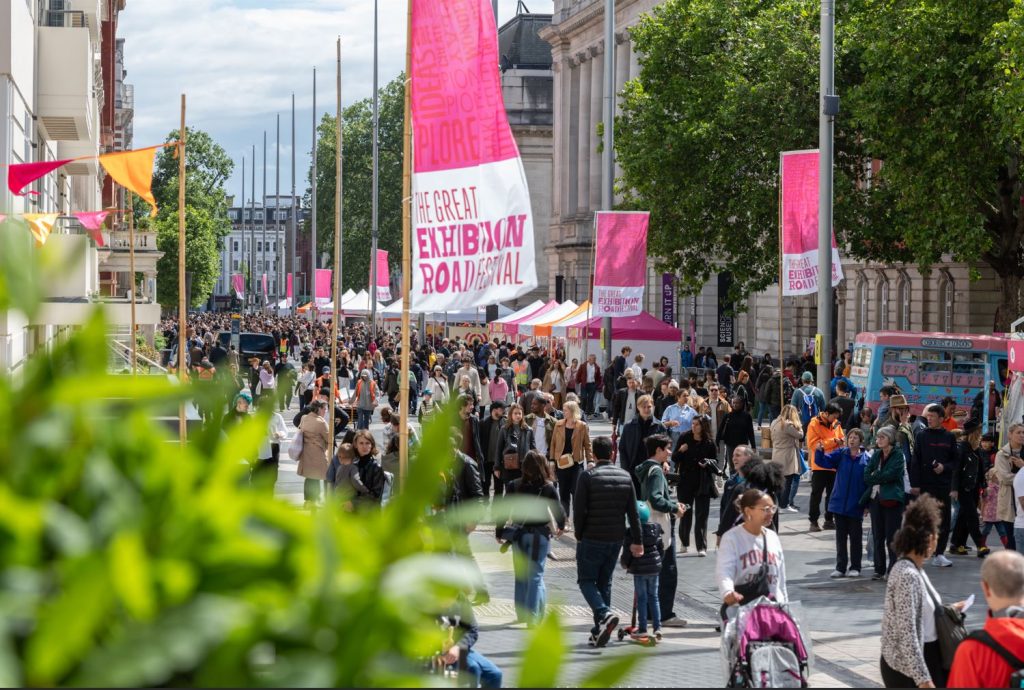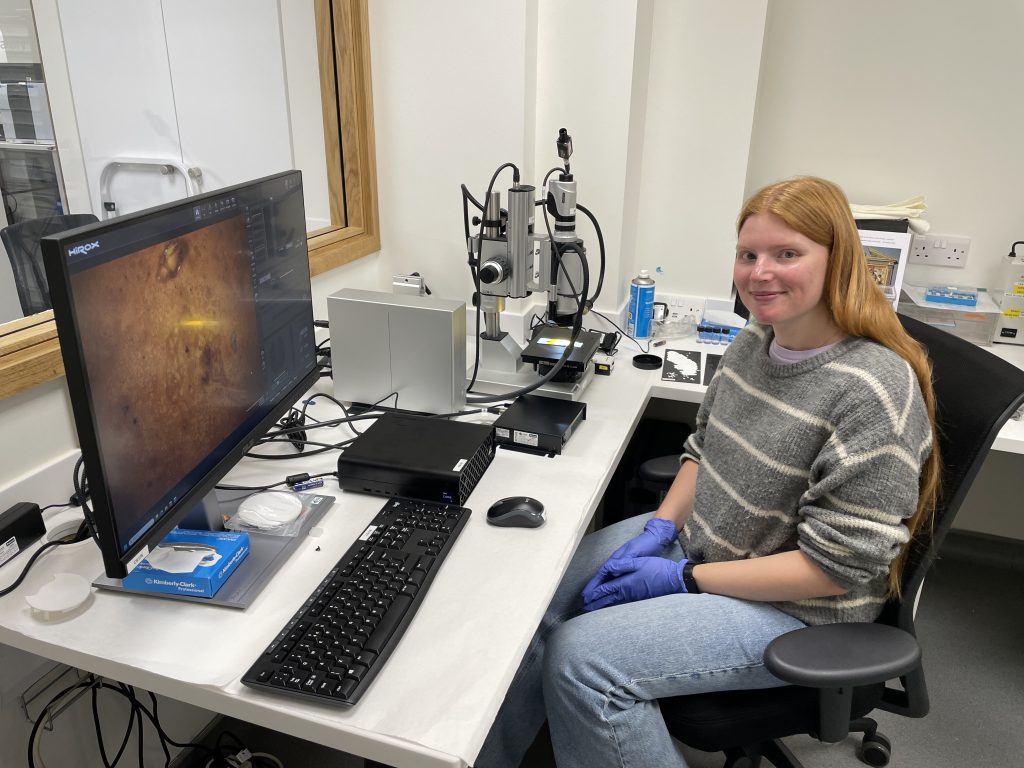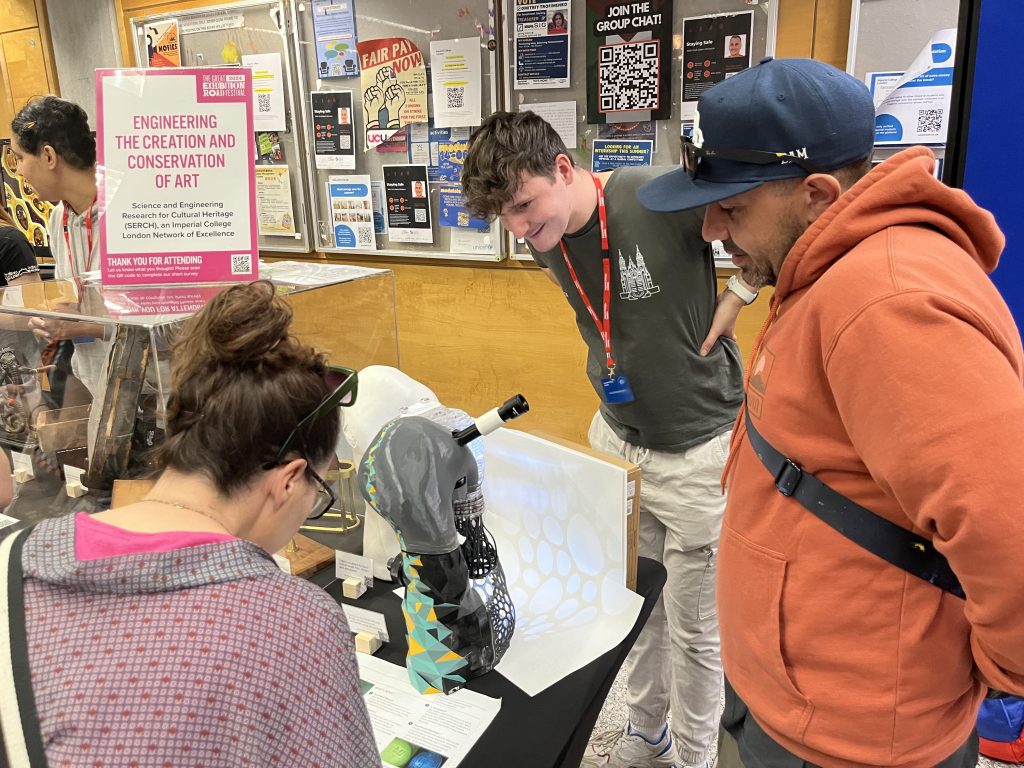The Great Exhibition Road Festival is Imperial’s largest public engagement event of the year. Taking place over a full weekend, Imperial runs the festival together with the local museums (V&A, Science Museum, Natural History Museum, Royal College of Music and Royal Albert Hall). Great exhibition road is closed to traffic and becomes full of people. Visitors from all ages and backgrounds engage in diverse activities featuring science and the arts during the celebrations. Over 54,000 people pre-registered for this year’s event!

Imperial researchers spent the weekend running their stands and answering questions from the curious attendees. Georgia Millsom, a PhD student in the Department of Materials, wrote a blog about her experience volunteering at the event.
The Science and Engineering Research for Cultural Heritage Network (SERCH) ran an exhibit at the Great Exhibition Road Festival back in mid-June. Ranging from Mechanical Engineering to Materials, a variety of Imperial’s departments were present with the aim of demonstrating the connections Imperial has to Cultural Heritage. Visitors were also able to delve into a range of objects from the Imperial College Archives. Many hadn’t considered Imperial’s own heritage before as it is a newer university than Oxford, Cambridge, and St Andrews. The teaching aids were hugely popular, with visitors guessing about their uses.
Observing degradation in everyday objects
A range of objects showing signs of degradation were also in display. A particularly worn violin case, kept in an attic, showed what may happen to objects if left in uncontrolled conditions.
The impact of sun on a book cover, showing fading of the colours, showed how powerful the sun can be in causing degradation. Younger visitors understood why they must put on suncream! Other visitors are now considering to change the location of their bookshelves!
We also had two balls of playdough on the table. We kept one in a transparent box while we let visitors handle the other. Despite visitors’ best efforts to mold the playdough to look like the one in the box, the handling meant it developed cracks and changed colour during the day. We used this analogy to discuss the balance between protecting objects and making collections interactive.

Showcasing the power of collaboration between engineering and cultural heritage
Visitors learned more about the collaborations Imperial has with museums and galleries. These include the Victoria and Albert Museum, the Natural History Museum, Tate, and English Heritage. The collaborations cover a wide range of projects, from investigating effectiveness of cleaning and treatment methods, prediction of gallery temperatures, and characterising degradation products on works of art.
My PhD is in collaboration with Tate and is focused on degradation of 20th century oil paints. Storage of paints for extended periods of time was possible thanks to the introduction of the metal tube. Paint formulations had to change to ensure stability. In contrast to traditional oils, oils produced industrially increased the number of additives and pigments to adapt. Another change during the 20th century was artists’ moving away from the practice of varnishing paintings, which leaves paint surfaces more vulnerable.
Some paintings are water sensitive, which can impact the effectiveness of current cleaning methods, many of which include water. This water sensitivity is linked to salt formation. My project is focused on understanding why and under what conditions these salts form.
The festival provided me with an opportunity to talk to a range of people about my research. Even artists who had not previously considered how the choices they make whilst creating art may affect its longevity.

Preserving AND making art through engineering research
What stood out the most to visitors, as it contrasted from the range of historical objects on display, was a 3D printed sculpture. The sculpture was constructed at Imperial and demonstrates how science can be used to make art as well as preserve it. As well as it being an impressive piece of art, it is also a functioning microscope which intrigued visitors. You will be able to learn more about this final year project in collaboration with an artist at Park Royal Design District in our next blog and upcoming podcast!

Promoting curiosity and new questions
The objects being exhibited, and conversations surrounding how Science and Cultural Heritage are closely linked led to discussions over topics such as:
How far do we go to restore objects?
Can we tackle the increase in plastics/ new materials in museum collections?
Is climate change affecting museums?
How do we understand what damage occurs over time? Especially in newer materials?
Generally, there is no straightforward answer to any of these questions, but research at Imperial is helping to shed some light on these topics.
Next year, the festival will run on the weekend of 7-8 June, save the date in your diary and come to enjoy and learn about any new developments.